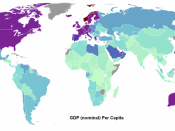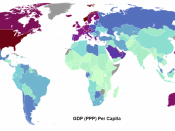China is the world's seventh largest economy and the largest country in terms of population size. It has also become the 8th largest world exporter of manufactured goods and the second largest economy in the world, after the United States, on the basis of purchasing power parity. The impact of globalisation on China has been profound, having an impact in a number of different areas.
Government Strategies to promote economic growth and development
Between 1978 to 1994 China abandoned agricultural collectivisation, replacing it with a system of household responsibility, allowing individuals to make their own production decisions. Individuals could sell their surplus output in free markets after the state quota was met. This lead to dramatic increases in food production and incomes. Surplus income was invested into privately run town and village enterprises responsible for light manufacturing. The government also increased the authority of local officials and plant managers in industry and permitted a wide variety of small-scale enterprises in services designed to increase productivity with the 'profit incentive'.
Today, non-state economies account for 40% of China's gross domestic product (GDP).
In 1980 Special Economic Zones were established in the southern coastal provinces of China as a result of its 'Open Door' policy, adopted towards foreign trade and investment. These zones attracted foreign investment through incentives offered such as low tax rates, exemption from import duties, cheap labour and power, and less stringent regulations. This resulted in an increase in trade from 10% of Gross National Product (GNP) in 1978 to 36% of GNP by 1996. In 1992 tariff rates were reduced from 32% to 19%, supporting China's drive for foreign investment.
Economic growth, development and quality of life
China has been experiencing a high rate of economic growth above 10% per annum. It uses foreign investment funds to...



China and globalisation!
It is really wonderful to know that globalisation is deeply rooted in conquering even the most obstinate domains.Societies like china in the past are complete opposite of capitalist inclination.
But then,no society can exist on its own.The principle of autharchy has done no one good.Thus,good that the economy of the chinese is open up to embracing other world.creating employment and increasing the GDP of the chinese people,global phenomenon is trying.Any way,very fair ,yet inpite of these glory songs i am happy the writer was also able to comment on the nagative aspect of globalisation on the chinese society.but of course he or she has not really gone deep to say or enlighten us about the other oddious issues globalisation has or is raising in china.
In deed,this comment of mine is not to degrade the work of this writer.i commend him though,yet i am of the opinion that the consequences of globalisation in china which he has outlined is understated.Other readers should endeavour to go through this ,so as to say something about this piece of work.
3 out of 3 people found this comment useful.